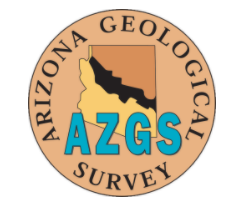Over the past several years several excellent stratigraphic sections have captured the iconic stratigraphy of Grand Canyon (e.g. Karlstrom and others (2008); Gootee (2019), Billingsley and others (2019).
Bob Leighty’s new, holistic stratigraphic column, Grand Canyon Stratigraphy, is a valuable and creative contribution to these efforts. Scholars and students of Grand Canyon geology will find that this fresh stratigraphic section nicely complements the many excellent treatises (e.g., Billingsley, 2000; Beus & Morales, 2002) and popular geology maps and texts on the Canyon.

AZGS’ Brian Gootee said of Bob’s stratigraphic column, “An excellent compilation and visual presentation of Grand Canyon stratigraphy for enthusiasts, general public, and professionals.”
The ‘Grand Canyon Stratigraphy’ incorporates all of the usual strat column features: geologic time, lithologies and rock units. The Lithologies section boasts nearly 40 radiogenic age dates tracking the temporal evolution of strata exposed in Grand Canyon. It includes a rich suite of symbols representing key sedimentary features and structures: fossils, mud cracks, cross bedding, convoluted bedding, to name a few. Structural features, isoclinal folds and boudinage, are also symbolized. Rock unit descriptions are terse but adequate; sedimentary rock descriptions are accompanied by a brief note on depositional environment.
To assist the untrained geology enthusiast, the ‘Important Terms’ box translates geologic lexicon into plain-spoken English, e.g., fluvial = stream-related and protolith = original rock type; isoclinal = parallel fold limbs. The ‘Canyon Etymology’ box sheds light on the meaning of the many esoteric canyon names (e.g., Vishnu (Hindu) – the god of preservation and protection; Toroweap (Paiute) – arroyo or dry wash).
The ‘Tectonic History’ box demarcates the five major tectonic events that shaped the rocks exposed in Grand Canyon. One dozen ‘Field Geology’ annotated photographs wonderfully capture both the geology and spectacular beauty of Grand Canyon from the youngest to the oldest rocks.
An abridged ‘Reference’ list includes citations for both popular geologic texts (e.g., Abbott and Cook, 2007, “Geology Underfoot in Northern Arizona”) and essential technical papers (e.g., Karlstrom and others (2018), “Cambrian Sauk transgression in the Grand Canyon redefined by detrital zircons”).
At full size ‘Grand Canyon Stratigraphy’ measures 24” wide by 54” tall, thus incompatible with the small screens of a smart phone or tablet. This product is best printed or viewed on computer monitor, and it’s ideal for educational use in the classroom or field. Printing the poster via Kinko’s online service would run ~$60.00.




